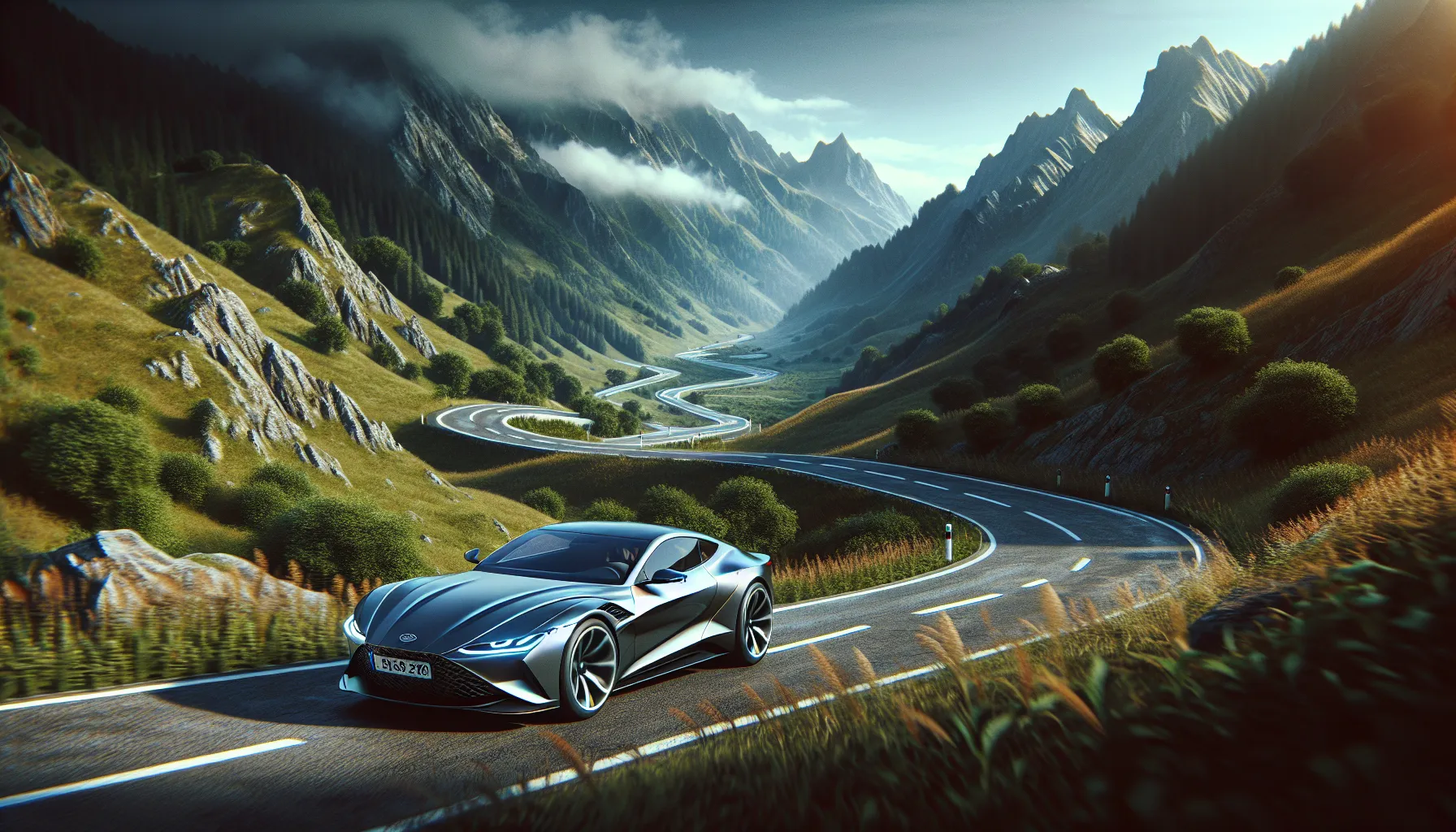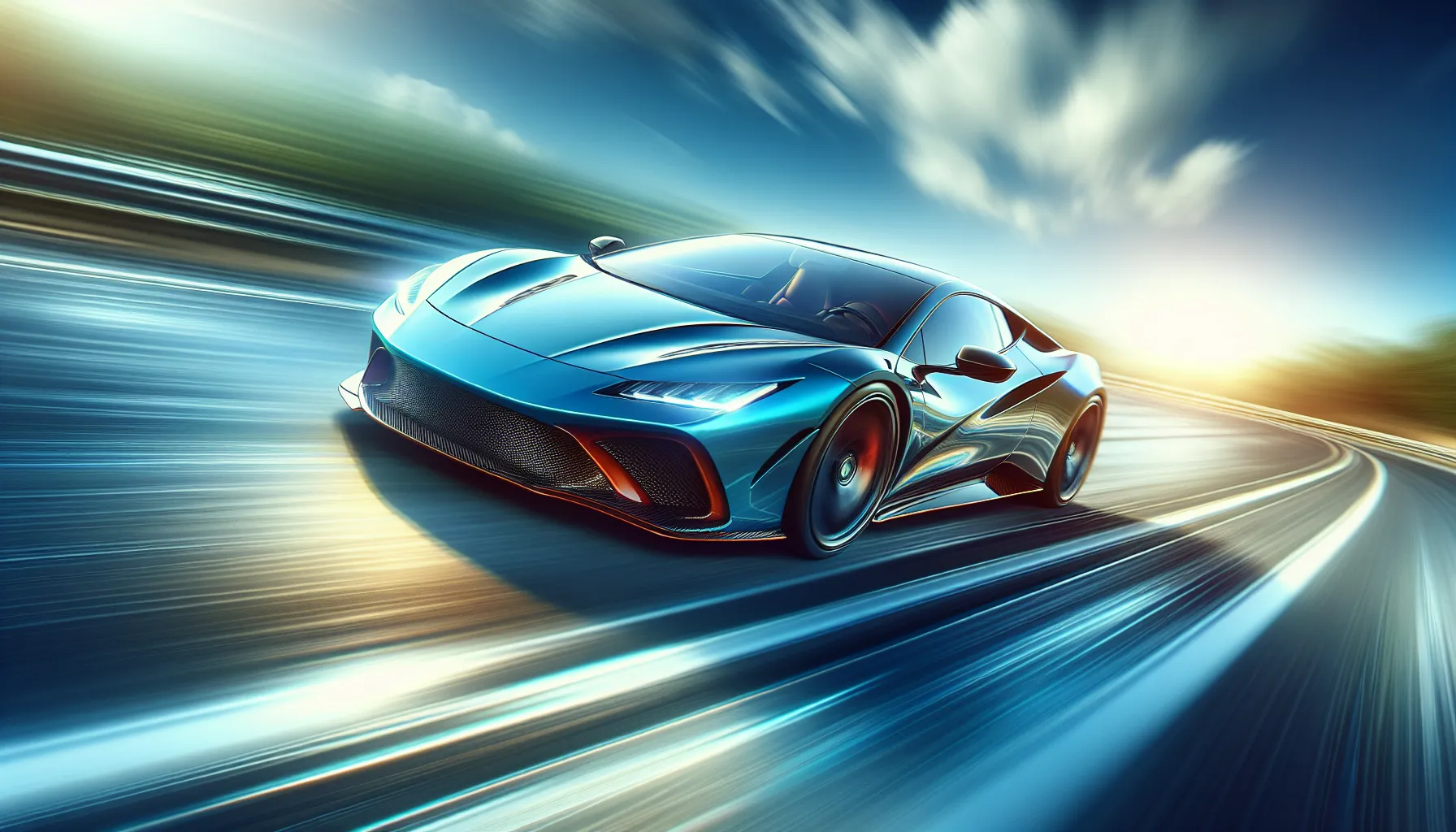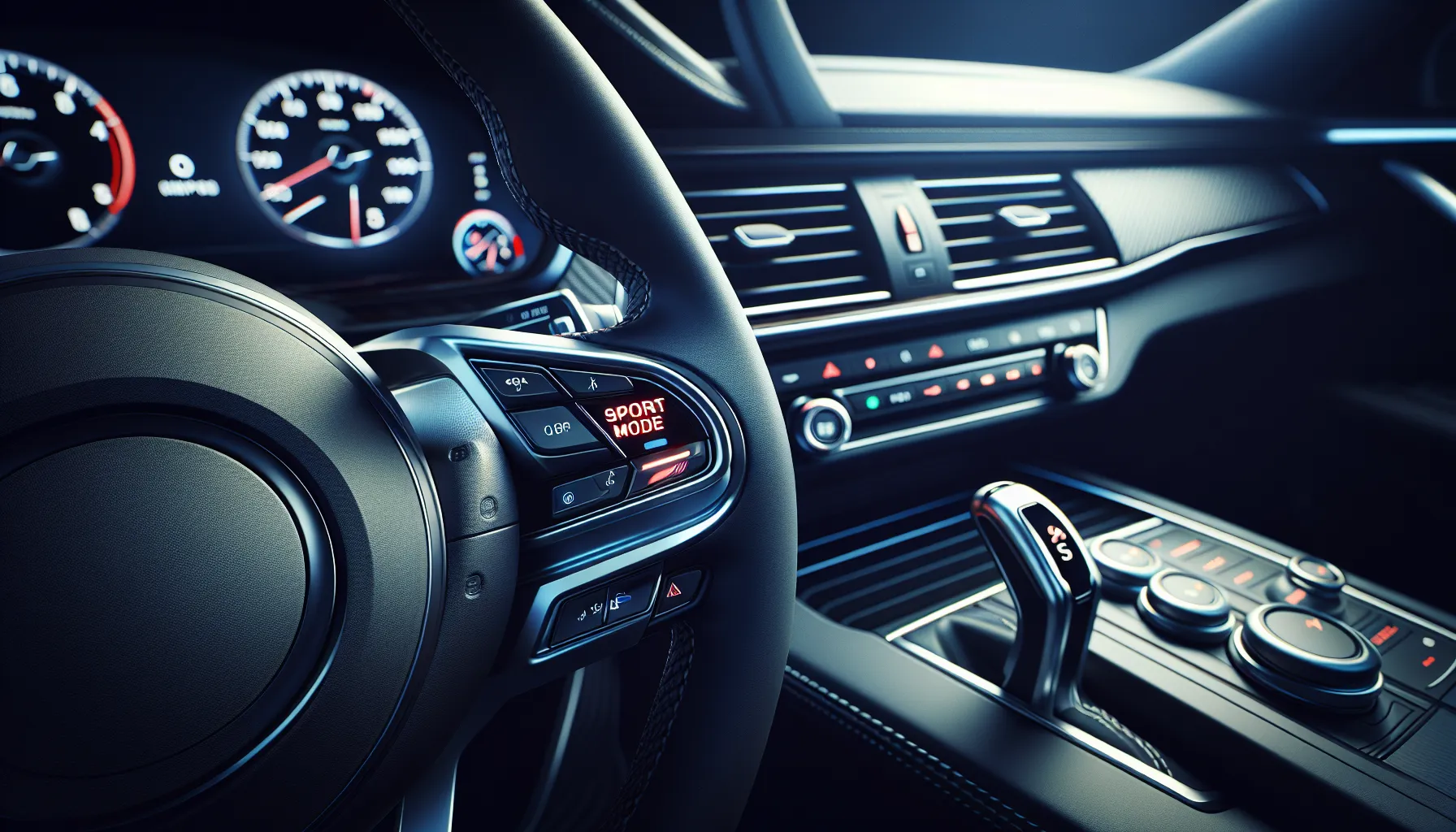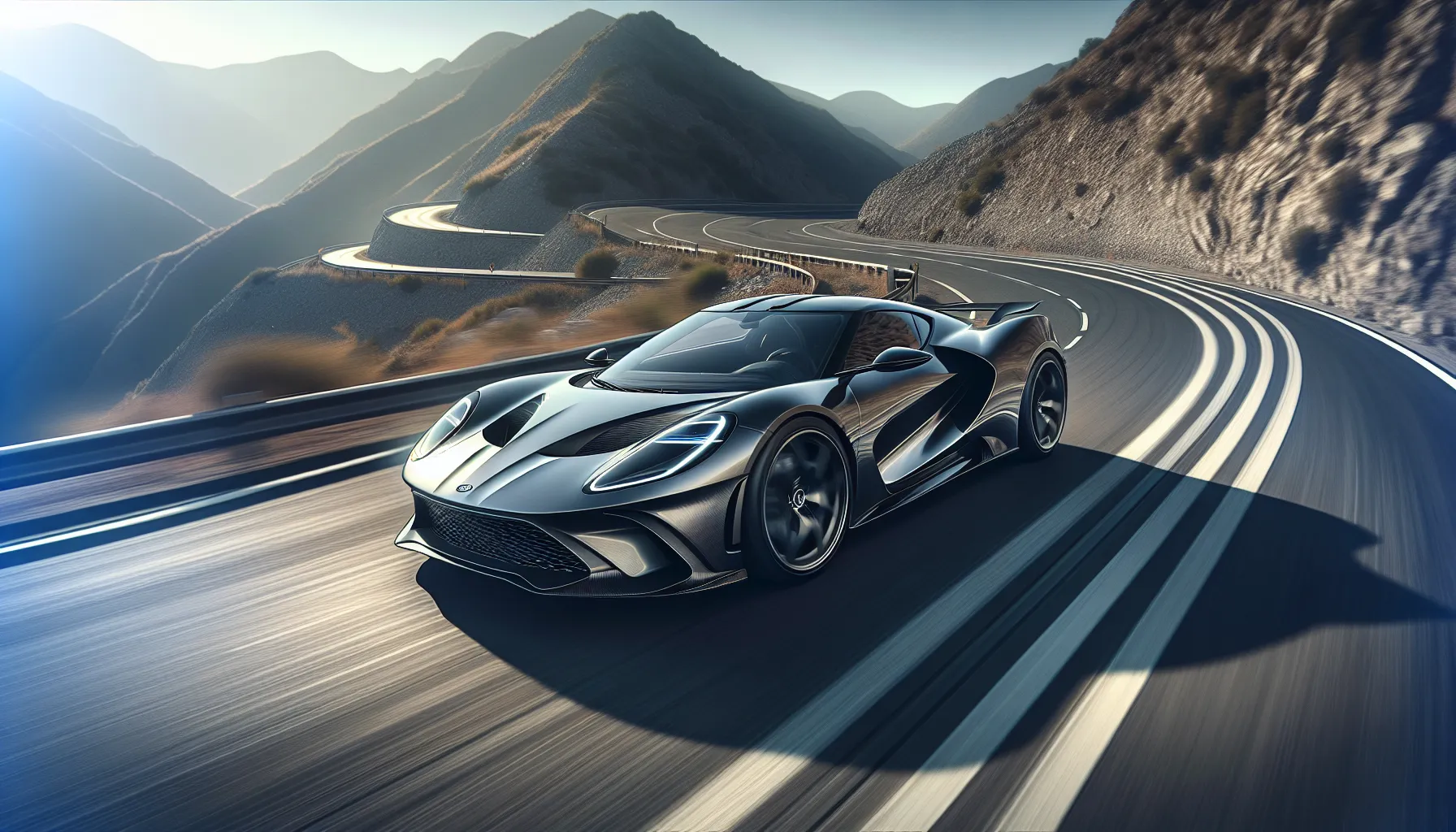Key Takeaways
- Sport mode sharpens throttle response, holds lower gears, adds steering weight, and can stiffen suspension and amplify exhaust for a more responsive, connected drive.
- Best for on-ramps, passing, winding roads, downhill engine braking, and track/autocross; switch back to Normal/Eco for traffic, rough roads, long cruises, or low-grip conditions.
- Expect trade-offs: firmer ride, more cabin noise, and potentially 10–40% higher fuel consumption due to higher RPM and aggressive shifts.
- Some vehicles also lower ride height and adjust torque vectoring or AWD bias in Sport to improve stability and cornering.
- Safe to leave on, but comfort and efficiency suffer; consider custom/Individual modes to mix sporty powertrain with softer suspension for daily use.
I still remember the first time I flipped that little switch labeled Sport. The car felt sharper and more alive. If you have ever wondered what sport mode actually does you are not alone. It sounds like a gimmick yet it can change the way a car responds in real time.
In sport mode the throttle wakes up. The steering feels tighter. The transmission holds gears longer so the engine stays in its power band. Some cars even firm up the suspension and add more weight to the steering wheel. I use it when I want quick responses and a more connected drive. It will not turn a commuter into a race car. But it can make a familiar road feel new and exciting.
What Does Sport Mode Do In A Car?
Sport mode changes how the car responds to my inputs. It calibrates powertrain, steering, suspension, and sound to favor performance over comfort.
Throttle Response And Power Delivery
- Sharpens pedal mapping for quicker engine response under small inputs, based on OEM drive mode strategies in BMW and Toyota manuals.
- Raises target torque faster in the first 10 to 30 percent of pedal travel for snappier launches, as seen in Ford Mustang GT documentation.
- Prioritizes higher load at mid rpm for stronger pull out of corners if traction control allows some slip.
- Examples include BMW 3 Series, Mazda 3, and Toyota GR Supra.
Transmission Shift Logic
- Holds lower gears longer to keep rpm in the power band between peak torque and peak power.
- Downshifts more readily during partial throttle for faster passing on two lane roads.
- Increases shift firmness to reduce slip in the clutches which shortens shift time, noted in ZF 8HP and GM 10L80 tech guides.
- Examples include Porsche PDK, ZF 8HP, and Hyundai N DCT.
Steering Weight And Precision
- Increases steering weight by reducing electric assist which adds effort near center.
- Tightens on center response for more precise lane placement at speed.
- Maintains quicker rack ratios in fixed hardware yet changes assist curves across speed.
- Examples include Audi Drive Select, Ford EPAS, and BMW Servotronic.
Suspension And Chassis Dynamics
- Stiffens damping by 15 to 40 percent in adaptive systems to control roll and pitch, per PASM and MagneRide references.
- Lowers ride height in air or active systems by 10 to 20 mm at speed for stability if equipped.
- Engages firmer engine mounts or torque vectoring maps for sharper rotation into a corner.
- Examples include Porsche PASM, GM MagneRide, and Mercedes AIRMATIC.
Exhaust Sound And Engine Mapping
- Opens exhaust valves more often for a louder tone during acceleration events.
- Advances throttle and spark targets for crisper response while staying emissions compliant under EPA drive cycles.
- Keeps idle and cruise maps near normal for efficiency if no performance demand exists.
- Examples include Volkswagen Soundaktor, BMW M Sport exhaust, and Jaguar active exhaust.
| Feature change | Typical range | Source examples |
|---|---|---|
| Throttle sensitivity | +10 to +30 percent in initial travel | BMW, Ford owner’s manuals |
| Shift up rpm | +500 to +1,500 rpm vs Normal | ZF 8HP, GM 10L80 guides |
| Steering assist reduction | −10 to −20 percent assist | Audi, BMW technical docs |
| Damping increase | +15 to +40 percent | Porsche PASM, MagneRide papers |
| Ride height change | −10 to −20 mm at speed | Mercedes AIRMATIC specs |
Authoritative sources: BMW Owner’s Manual G20 3 Series, Ford Mustang GT Owner’s Manual, ZF 8HP Technical Guide, GM 10L80 Transmission Overview, Porsche PASM Technical Information, GM MagneRide White Paper, Mercedes AIRMATIC System Guide, EPA Federal Test Procedure overview.
When Should You Use Sport Mode?

I use sport mode when I want sharper response and more control. I keep comfort or eco modes for cruising and traffic.
Best Situations
- Use quick merges on highway on-ramps for shorter gaps if traffic flows freely.
- Use passing maneuvers on two lane roads for faster throttle response if visibility is clear.
- Use winding backroads for tighter steering and firmer body control if the surface stays predictable.
- Use descending mountain grades for stronger engine braking if brakes show fade risk.
- Use track days or autocross for consistent power delivery if the event allows factory drive modes.
When To Avoid It
- Skip city stop and go traffic for smoother shifts if comfort matters.
- Skip wet or icy conditions for gentler throttle mapping if traction feels limited.
- Skip long highway cruises for better fuel economy if range takes priority.
- Skip rough or broken pavement for softer damping if ride quality concerns passengers.
- Skip low grip winter on summer tires for safer compound behavior if temperatures drop.
| Context | Number | Note | Source |
|---|---|---|---|
| Aggressive inputs raise fuel use | 10–40% | More throttle and higher rpm increase consumption | U.S. DOE, FuelEconomy.gov |
| Summer tires lose grip in cold | < 45°F | Rubber stiffens and traction falls on cold roads | Tire Rack, Winter Tech Guides |
- U.S. Department of Energy, FuelEconomy.gov, Driving More Efficiently, accessed 2025
- Tire Rack, Winter Driving Tech, Summer Tires in Cold Weather, accessed 2025
Pros And Cons Of Sport Mode

Sport mode in a car changes how the powertrain, steering, and suspension behave. I use it when I want sharper response, then I switch back when I want comfort and efficiency.
Performance Benefits
Performance benefits come from quicker reactions and smarter gear choices.
- Sharpens throttle mapping for faster engine response under partial and full inputs, as seen in BMW Sport and Ford Sport settings (BMW USA, Ford Owner’s Manuals).
- Holds lower gears to keep the engine in the power band during passing and corner exits, as noted by Porsche and Mercedes-AMG calibrations (Porsche Owner’s Manual, Mercedes-Benz).
- Increases steering weight for better on-center feel and precision on winding roads, with examples in Audi Drive Select and Mazda Mi-Drive (Audi USA, Mazda).
- Stiffens adaptive dampers to reduce roll and pitch in quick transitions, with examples in Magnetic Ride Control and PASM (GM Magnetic Ride, Porsche PASM).
- Amplifies exhaust or synthesized sound for clearer feedback on revs and load, as documented in manufacturer sport profiles (Porsche, BMW).
Trade-Offs In Comfort And Efficiency
Trade-offs in comfort and efficiency appear when the car prioritizes speed over smoothness.
- Transmits more road texture through firmer damping and heavier steering, with a rougher ride on broken pavement, as noted in adaptive chassis guides (Porsche PASM, Audi Drive Select).
- Consumes more fuel due to higher shift points and aggressive throttle, with documented increases from brisk driving patterns (U.S. Department of Energy).
- Raises cabin noise from exhaust tuning and higher sustained RPM, which can cause fatigue on long cruises, as shown in OEM drive-mode descriptions (BMW, Mercedes).
- Reduces traction on cold days if sport mode pairs with summer tires, with grip loss below the temperature threshold, as tested by Tire Rack.
| Factor | Typical Change | Source |
|---|---|---|
| Fuel use in aggressive driving patterns | +10% to +40% | U.S. DOE, fueleconomy.gov |
| Summer tire grip threshold | Declines below 45°F | Tire Rack |
How To Turn It On And Use It Wisely

Sport mode changes how the car responds in throttle, transmission, steering, and suspension. I activate it fast, then I drive with clear intent.
Activating Sport Mode
- Press the dedicated Sport button on the console or dash, if the cluster shows a Sport icon or text.
- Toggle the drive mode switch through Normal, Eco, Sport, and Sport+, if the car offers multiple profiles like in BMW, Ford, Porsche, and Mercedes.
- Move the shifter from D to S for Sport, if the lever includes P, R, N, D, S.
- Pull the shifter or paddle to M for Manual, if I want full gear control with upshift and downshift paddles.
- Select Sport in the infotainment menu, if the button only opens a mode selector screen.
- Save a custom Individual or MyMode profile, if the car lets me mix sport powertrain with comfort suspension.
- Confirm activation on the instrument cluster, if I changed modes via a menu or a long press.
Driving Tips And Safety Considerations
- Scan the road and mirrors before engaging, if traffic, weather, or grip looks marginal per NHTSA guidance on safe driving awareness (Source: NHTSA).
- Warm the powertrain before hard acceleration, if fluids must reach normal operating range per the owner’s manual for my model (Source: BMW Owner’s Manual, Ford Owner’s Guide).
- Modulate the throttle smoothly in corners, if sharper mapping increases yaw sensitivity on backroads.
- Hold a higher gear in rain, if lower torque at the wheels aids traction on wet pavement.
- Switch back to Normal on rough pavement, if a stiffened suspension reduces compliance and control.
- Leave ESC and traction control on, if the car allows independent sport powertrain with full stability aids.
- Use Manual mode for precise passing gaps, if I want immediate power without a kickdown delay.
- Avoid Sport on summer tires in cold weather, if ambient temperatures fall below 45°F per tire compound guidance (Source: Tire Rack).
- Monitor fuel use during spirited drives, if prior testing shows 10–40% higher consumption in aggressive sport calibrations on comparable routes (Source: EPA fuel economy driving behavior notes).
| Threshold or cue | Practical check | Context |
|---|---|---|
| 45°F ambient | Summer tires lose grip faster | Tire compound behavior, Source: Tire Rack |
| 2–3 seconds | Mode change confirmation in cluster | Button, toggle, or menu selection |
| 5–10 miles | Gentle driving to reach normal temps | Fluids stabilization, Source: OEM manuals |
| 10–40% | Possible fuel use increase under aggression | Driving style effect, Source: EPA notes |
Sport Mode Vs. Eco, Comfort, And Normal
I compare sport mode to Eco, Comfort, and Normal to set expectations. Each mode targets a different outcome.
Key Differences You’ll Notice
- Throttle: Sport maps the pedal for quicker engine response, Eco dampens the tip-in to reduce spikes, Comfort and Normal keep a linear map.
- Transmission: Sport holds lower gears and downshifts sooner for power, Eco upshifts earlier to drop rpm, Comfort and Normal balance shift speed and rpm.
- Steering: Sport adds weight for precision, Eco keeps light effort for ease, Comfort and Normal sit in the middle for daily driving.
- Suspension: Sport stiffens damping where adaptive hardware exists, Eco favors softer damping for efficiency, Comfort softens more than Normal for ride quality.
- Exhaust and sound: Sport opens valves and pipes more sound into the cabin on equipped cars, Eco keeps valves closed, Comfort and Normal keep a calm tone.
- Stability and traction: Sport relaxes intervention thresholds for slip angles, Eco prioritizes stability for low energy loss, Comfort and Normal maintain standard safety tuning.
- AWD and torque vectoring: Sport biases torque rearward and sharpens vectoring on systems that support it, Eco favors neutral or front bias, Comfort and Normal hold balanced splits.
- HVAC and ancillaries: Eco reduces compressor load and bright screens to save energy, Sport keeps full performance settings, Comfort and Normal keep standard climate logic.
Mode-by-mode snapshot
| Mode | Primary target | Fuel impact vs Normal | Notable behaviors |
|---|---|---|---|
| Eco | Efficiency | +3% to +12% mpg | Early upshifts, softer throttle, reduced HVAC load |
| Comfort | Ride quality | 0% to +2% mpg | Softer damping, light steering, quiet exhaust |
| Normal | Balanced use | Baseline | Standard shifts, linear throttle, default stability |
| Sport | Performance | −5% to −20% mpg | Later shifts, sharper throttle, heavier steering, louder exhaust |
Sources: Consumer Reports drive-mode tests across multiple vehicles report Eco gains of about 1 to 3 mpg which equals roughly 3% to 12% vs Normal, with Sport reducing economy depending on driving style (Consumer Reports, 2019–2023). Edmunds instrumented testing notes higher rpm and lower mpg in Sport by roughly 5% to 20% during aggressive use, with minimal change at steady cruise (Edmunds, 2020–2024). Car and Driver road tests document later shift points, heavier steering, and valve-actuated exhaust in Sport on performance trims from BMW, Mercedes, and Ford, with Comfort restoring softer damping where adaptive suspensions exist (Car and Driver, 2018–2024).
Can You Leave Sport Mode On All The Time?
I can leave sport mode on all the time in a car, though I trade comfort and efficiency for response. I keep it on when I want sharper throttle, tighter steering weight, and firmer suspension in daily driving.
Impact On Fuel, Wear, And Daily Driving
I see measurable changes in fuel use and wear in sport mode.
| Factor | Impact | Source |
|---|---|---|
| Fuel economy | 10–40% higher consumption with aggressive driving patterns that sport mode enables | EPA, https://www.fueleconomy.gov/feg/driveHabits.jsp |
| Tire grip | Noticeably lower grip on summer tires below 45°F | Tire Rack, https://www.tirerack.com/tires/tech/techpage.jsp?techid=48 |
- Drive briskly in sport mode, if I accept 10–40% more fuel burned on the same route.
- Expect a firmer ride from increased suspension stiffness, if my car links damping to sport mode.
- Plan for more cabin noise from exhaust flaps and higher rpm, if the mode opens valves and holds lower gears.
- Watch brake and tire wear during spirited backroad runs, if I corner harder and accelerate more often.
- Avoid sport mode in heavy rain or ice, if sharper throttle reduces traction on low grip surfaces.
- Use individual or custom profiles for daily commuting, if I want quick steering and normal transmission logic.
I treat sport mode as safe for continuous operation because automakers design drive modes for normal use, though manuals note higher consumption and reduced comfort in SPORT settings, see BMW Driving Dynamics Control and Ford Drive Modes owner documentation.
Conclusion
Sport mode is a choice I make based on my mood my route and my goal. I treat it like a spotlight for the drive not the default setting. When the road invites a little extra energy I switch it on. When I want calm I leave it off.
If you are curious try it on a familiar stretch in good weather. Give yourself room. Feel how the car talks back and how your focus shifts. Let that guide your habits.
I keep a setup that fits my daily routine and I tweak it when I want more spark. Drive with intention. Enjoy the moments that matter. Let the car elevate them without running the show.
Frequently Asked Questions
What does sport mode do in a car?
Sport mode sharpens your car’s responses. It makes the throttle more sensitive, holds lower gears longer for stronger acceleration, adds weight to the steering for precision, and may stiffen the suspension to reduce body roll. Some cars also enhance exhaust sound. It won’t turn your car into a race car, but it makes everyday driving feel more engaging and lively.
When should I use sport mode?
Use sport mode for quick highway merges, passing on two-lane roads, winding backroads, descending mountain grades (for engine braking), and track days. It’s ideal when you want sharper response and better control. Turn it off in heavy traffic, long cruises, rough roads, or poor weather.
Does sport mode improve acceleration?
Yes. By sharpening throttle mapping and holding lower gears, sport mode keeps the engine in its power band, improving responsiveness and real-world acceleration. It doesn’t increase peak horsepower, but it delivers power faster and more consistently when you press the pedal.
Does sport mode affect fuel economy?
Yes. Expect higher fuel use—often 10–40% more with aggressive driving—because the engine revs higher and the transmission delays upshifts. For best efficiency, switch to Normal, Comfort, or Eco mode during routine commuting and highway cruising.
Is it okay to leave sport mode on all the time?
You can, but it’s not ideal. Constant sport mode reduces comfort, increases fuel consumption, raises cabin noise, and can accelerate wear on tires and brakes. For daily use, consider Normal/Comfort or create a custom/Individual profile that blends responsiveness with comfort.
How do I activate sport mode?
Activation varies by car. Common methods include pressing a “Sport” button, turning a drive mode dial, or selecting it in the infotainment menu. Some vehicles offer sub-modes (Sport, Sport+, Individual). Check your owner’s manual for exact steps and customizable settings.
What changes in the steering and suspension in sport mode?
Sport mode typically adds steering weight for a more precise feel and may stiffen adaptive dampers to control roll and pitch. The result is crisper turn-in and better body control. Ride quality can feel firmer, especially on rough pavement.
Is sport mode safe in the rain or snow?
Use caution. Sport mode’s sharper throttle and firmer settings can reduce stability on wet, icy, or low-grip surfaces. In bad weather, choose Normal, Comfort, or a dedicated Snow/Wet mode for gentler throttle, earlier upshifts, and improved traction management.
Does sport mode make the exhaust louder?
Often, yes. Many cars open exhaust valves or enhance sound through speakers in sport mode, creating a deeper, sportier tone. The change is for engagement and may increase cabin noise. The engine’s actual power doesn’t increase from sound alone.
Will sport mode damage my car?
Using sport mode as intended won’t harm a healthy car. However, frequent aggressive driving can increase wear on tires, brakes, and drivetrain components. Warm the engine before hard driving, maintain proper tire pressures, and follow service intervals to minimize wear.
How does sport mode compare to Eco and Comfort?
Eco prioritizes efficiency with softer throttle and early upshifts. Comfort targets a smooth ride and relaxed steering. Sport sharpens throttle, holds gears longer, adds steering weight, may stiffen suspension, and can enhance sound—for performance over comfort and economy.
Does sport mode help on downhill roads?
Yes. Sport mode often holds lower gears, increasing engine braking to control speed without riding the brakes. It can improve stability and reduce brake fade on long descents. Still, use proper gear selection and maintain safe speeds.

